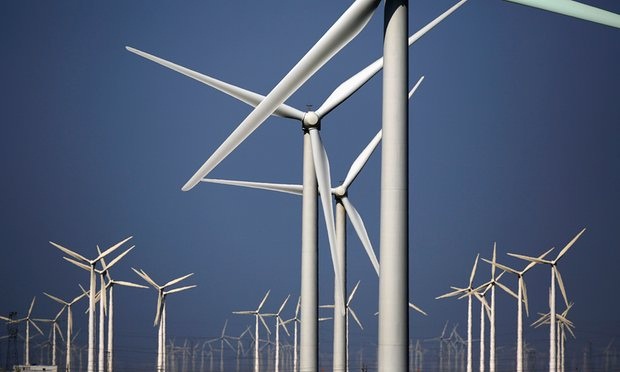China to generate a quarter of electricity from wind power by 2030 Report says figures could rise to nearly one-third with power sector reforms, making it the world wind energy leader by a large margin

China is on track to generate more than a quarter of its electricity from wind power by 2030, and the figure could rise to nearly a third with power sector reforms, a new study has found. Within 14 years, more new generating capacity – mostly clean energy – will come online in China than currently exists in the whole of the US, further cementing the country’s image as a burgeoning green giant. Valerie Karplus, a co-author of the study published in the journal Nature Energyand assistant professor at MIT, said that Beijing wanted to increase its wind capacity by a factor of between three and five before 2030. “China is now the world’s wind energy leader by a fairly large margin,” she said. The country’s 145GW of installed wind capacity last year eclipsed both Europe and the US, even if not all of it is yet grid-connected. By 2030, renewables are slated to generate a fifth of China’s primary energy needs. But the green giant narrative sits uneasily with the reality that China, the world’s largest greenhouse gas emitter, still produces more than 70% of its electricity from coal. It is also a pique to Europe’s clean energy industry and policymakers who made much of the gains in the global green energy race over the first half of the decade. Oliver Joy, a spokesman for the European Wind Energy Association, said: “Europe’s leadership in renewables may be consigned to the history books if we don’t implement long-term policies. If we do that, Europe could also get a quarter of its power from renewables by 2030. It is telling that global investment in renewables reached record levels last year and yet Europe saw a 21% decline.” Investment in China’s renewable supplies may be less of an immediate priority than integrating the country’s variable wind capacity, due to an outdated transmission system hooked on inflexible and predictable energy flows. At present, local economic incentives favour inflexible suppliers, partly because of an annualised system of must-run quotas for coal that spread across much of the country. These entitle operators to contractual guarantees and prevent amendments that reflect marginal price variations. Nick Mabey, the chief executive of the E3G thinktank, said: “China’s inflexible coal power stations means that it wastes 40% of the clean wind power it generates in some regions. Tapping into China’s abundant and affordable wind resources will require radical power system modernisation and tackling powerful coal interests.” The Nature Energy paper analyses future energy generation and distribution. “With more extensive reforms leading China to transition to spot markets and allowing electricity providers to reflect the marginal costs of wind generation, China’s clean energy potential could be further increased,” Karplus said. Building windfarms close to “load centres” where electricity can be easily transferred and used would also make more sense than concentrating them in wind-rich but geographically isolated territories, she added. With tweaks to coal unit scheduling, wind power could be procured as soon as it becomes available, allowing decisions on a much tighter timescale than currently happens, the report says.

